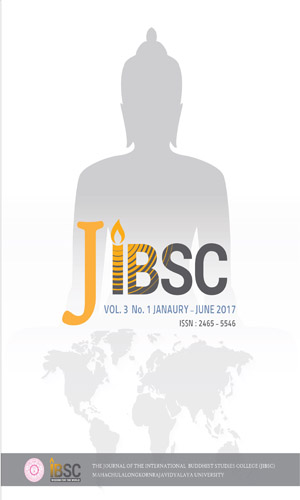CONFLICTING TRANSLATIONS OF RŪPA
Main Article Content
Abstract
Rūpa is a well common concept within Buddhist literature found in teachings covering all aspects of the Dhamma. From meditation teachers to academics, it is one of the staples of how objects of consciousness are explained. What may be uncertain though is its intended meaning when in use over two millennia ago. While the accepted literal translation of the word is shape, or color, there are various interpretations of what that means, ranging from the ‘physical body’ to all that is ‘matter’. This disagreement may imply confusion from Buddhist scholars, as such, an attempt at a more unifi ed and accepted meaning of rūpa should be considered. This article will look at the various translations of rūpa in the Pāli Canon made by Rhys Davids, Walshe, Bhikkhu Bodhi and others as well as post canonical texts, such as the Vissudhimagga, to show possible confusion concerning rūpa and the importance for a solution. It is suggested that rūpa is a most diffi cult concept to translate into contemporary English and that further usage should be done with great care and consideration. This paper aims to exhibit the possible confusion of the modern day understanding of rūpa and hopes to stress that while the use of the word is necessary, a consensus in its meaning is also important for the sake of understanding.
Article Details
The Journal of TCI is licensed under a Creative Commons Attribution-NonCommercial-NoDerivatives 4.0 International (CC BY-NC-ND 4.0) licence unless otherwise stated. Please read our Policies page for more information on Open Access, copyright and permissions.


